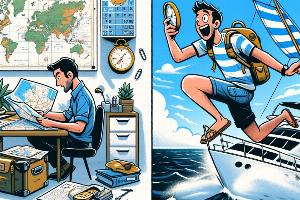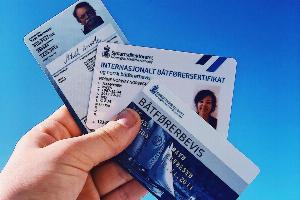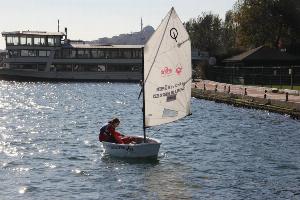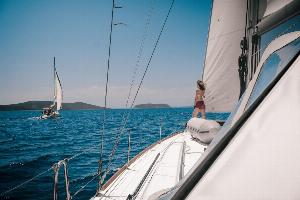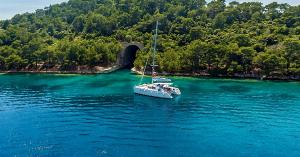Is Sailing Safe?
Although there are many types of accidents that can happen to you at sea, the most common ones can be prevented by following the safety rules. And you should keep in mind that going on a boat trip is always much safer than getting in a car. If we do not give up on getting into the car, why should we give up a pleasant holiday in the vast blue? Of course, provided that we know the problems we may encounter and take the necessary precautions...
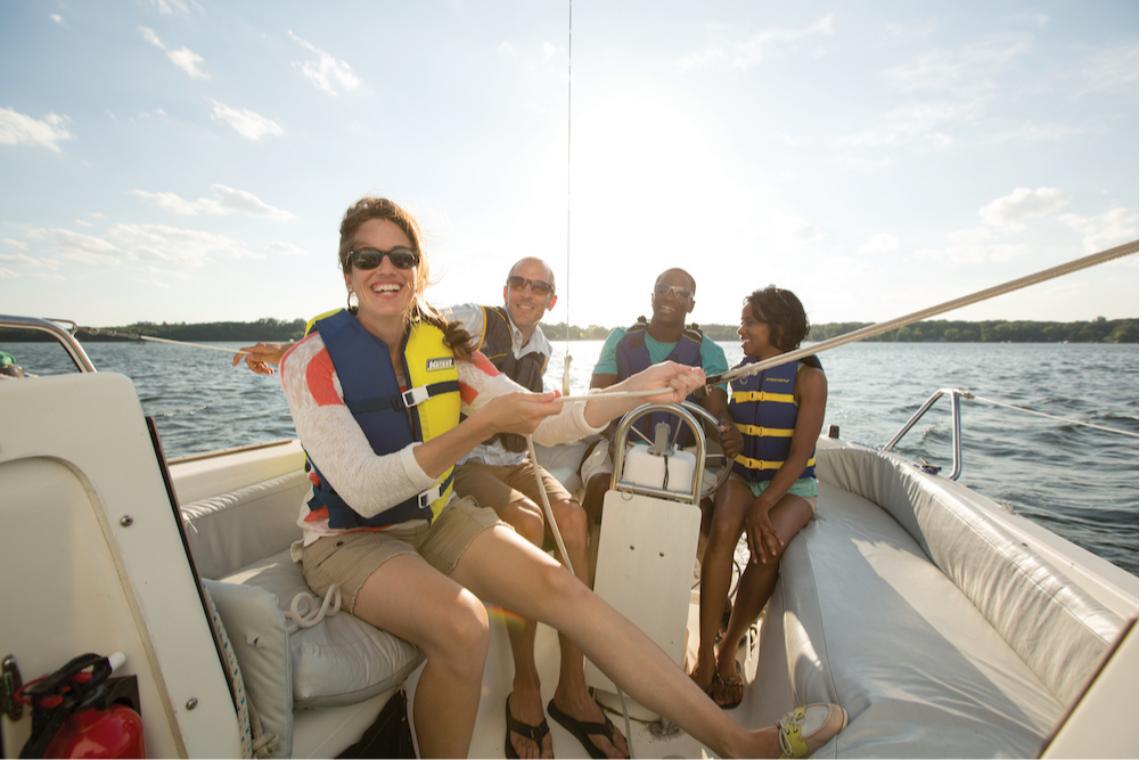
The truth is, we take countless risks every day. When we take the bus, take a walk in the city center or hang curtains at home! Just because an activity has some risks doesn't mean you should avoid it. The key to enjoying life is to protect ourselves and not neglect measures to reduce risks, rather than avoiding risk altogether. As long as you follow safe procedures and be careful, you can almost avoid all risks when sailig. You may also minimize risks by having an experienced local captain with you when you are not faimiliar with your sailing destination and following his safety instructions, and you can enjoy sailing as safe as cycling. As for the answer to the question in the title; “There is nothing in life that is not without danger, because life itself is risk! But sailing and boating is less dangerous and much more fun than most activities.”
Things to consider in order to eliminate the risks…
Do not drink and sail!
Admittedly, sipping your favorite drink during sunset at the sea is one of the great pleasures in life, especially if you are on vacation with your family and friends. While you do not drink and drive, this also applies to sailing. It is absolutely wrong for the captain to drink alcohol while sailing. If the anchor is in place, you can drink if there is someone who will observe whether the boat is dredging anchor and make the necessary intervention until you wake up.
Find out where life jackets are and how to put on and use them before you set sail.
Life jackets prevent drowning, which is the most common cause of death in sailing. Not everyone is required to wear a life jacket at all times, depending on the maritime regulations of where you are sailing. However, when going on a sailing holiday, information should be obtained about the location and use of life jackets. If the wind suddenly picks up or the sea starts to swell, everyone on board should wear life jackets. Children, on the other hand, should wear a life jacket when walking from the cockpit to the bow of the boat, even if the sea is calm, while walking around the boat deck. Boat size is also an important factor when considering the necessity of wearing a life jacket. As the boat gets smaller, it becomes essential to wear a life jacket. For example, you should wear your life jacket when going ashore on a dinghy. No matter how calm the sea is, a large motor yacht passing near you can cause a sudden wave that will throw you into the sea.
Get boat and cruise safety training!
It is important that the captain has a boat safety training as well as a valid license. Navigational safety courses are the best way to understand the risks of sailing. During such courses, learn about right of way, conflict prevention rules at sea, outboard motors, navigation lights and various emergency equipment and what to do in the most common accident scenarios. If you are planning a vacation where you will use the boat and you also trust your safety knowledge, you can plan to take one or a few lessons just to practice and brush up on your knowledge.
Watch your speed!
Especially around ports and marinas, excessive speed is a major factor in sailing accidents. It will be beneficial to proceed at a slow pace where you can easily observe the buoys while entering the marina. Even if you sailed up to the marina entrance, you have to switch to the engine as you have less mobility in sailing.
A little imagination...
Review disaster and accident scenarios on calm waters before you set foot on the boat. All these preparations should not make you nervous, such mental preparation will make you psychologically stronger when something goes wrong. For example, what should you do if your engine stalled at a point where you cannot anchor? If you fall into the sea, how will you get on the boat? Or what will you do when it's too late to reef your sails in strong winds?
Decide what you should stay away from
Stay away from large ships and small marinas where conflicts are frequent. In fact, stay away from any environment where you have doubts.
Weather check
You should check the weather forecast long before you drop anchor. If you are going to set out in the morning, you should look at the weather conditions at night and make your schedule accordingly. However, be sure to review the weather report before you start your morning sail.
Study your lesson!
Every destination has different geographical features as well as different winds. It is important that you examine the nautical charts of your sailing area in detail. There are rocks, debris that can be dangerous, especially in island areas. You can learn these from navigational charts as well as from sailor blogs and guidebooks. For example, a bay that is very calm all day may have a wind that comes out at one hour of the day and stirs everything up. Such information will save your life, or at least your enjoyment.
You can also consider getting a captain
You can not only have a comfortable holiday with a local, experienced captain, you can also make up for your shortcomings by chatting a lot with your captain and helping him during sailing. In this way, you can increase your experience and have the knowledge and self-confidence to take the control for your next holiday.
You can check out this article for a skippered holiday, click here.
Latest content in sailor's stuff category
-
Early Bird or Last-Minute Sailor: Strategies for Yacht Charter Booking
![Early Bird or Last-Minute Sailor: Strategies for Yacht Charter Booking]()
-
Safe Sailing Essentials: Your Guide to a Secure Yacht Charter
![Safe Sailing Essentials: Your Guide to a Secure Yacht Charter]()
-
Mastering Maritime Regulations: A Guide to Yacht Charter Licensing
![Mastering Maritime Regulations: A Guide to Yacht Charter Licensing]()
-
Navigating Yacht Selection: Expert Tips for a Seamless Charter Experience
![Navigating Yacht Selection: Expert Tips for a Seamless Charter Experience]()
-
Securing Your Holiday: A Guide to Deposit Insurance in Yacht Chartering
![Securing Your Holiday: A Guide to Deposit Insurance in Yacht Chartering]()
-
Deciphering the Costs of Yacht Chartering in Greece
![Deciphering the Costs of Yacht Chartering in Greece]()
-
Understanding the Costs of Chartering a Yacht in Croatia
![Understanding the Costs of Chartering a Yacht in Croatia]()
Categories
- Bareboats 24
- Gulets 7
- Destination 49
- Sailor's Stuff 36
- Life Aboard 29
- Itineraries 90
- Italy 32
- Greece 18
- Croatia 21
- Turkey 7
- Spain 9
- France 4
- Boat Rental 101 8

